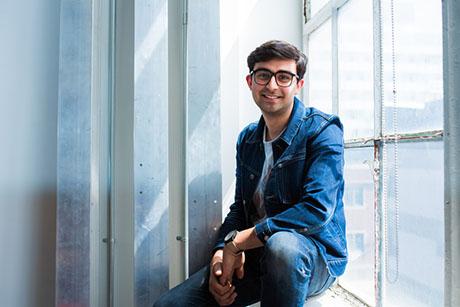Talking Shop: Assistant Professor Sili Deng
Understanding combustion
Much of the conversation about energy sustainability is dominated by clean energy technologies like wind, solar, and thermal. However, with roughly 80% of energy use in the United States coming from fossil fuels, combustion remains the dominant method of energy generation.
“People think of combustion as a dirty technology, but it’s currently the most feasible way to produce electricity and power,” explains Sili Deng, assistant professor of mechanical engineering and Brit (1961) & Alex (1949) d’Arbeloff Career Development Professor.
Deng is working toward understanding the chemistry and flow that occurs in combustion in an effort to improve technologies for current or near-future energy conversion applications. “My goal is to find out how to make the combustion process more efficient, reliable, safe, and clean,” she adds.
MechE Connects spoke with Deng, who is the principal investigator at the Deng Energy and Nanotechnology Group, to discuss her combustion research.
How did you first become interested in studying combustion?
I was interested in engineering at very early age since my dad is an electrical engineer. When I was young, he actually built a remote control for our TV using just a few sensors and controllers. As an undergraduate at Tsinghua University, I studied thermal engineering. One day, I was talking about my research interests with a friend and she said ‘What if you could increase the efficiency of energy utilization by just 1%? Considering how much energy we use globally each year, you could make a huge difference.’ That conversation really opened my eyes and it led me to become a combustion scientist.
My expertise is on chemically reacting flow within combustion with two main focuses: the first is figuring out how to control the combustion process and the second is figuring out how to reduce or eliminate soot formation.
How are you trying to control the combustion process?
I focus on understanding and controlling the chemistry-flow interactions during the combustion process. The details of combustion are much more complicated than our general understanding of fuel and air combining to form water, carbon dioxide, and heat. Instead, there are hundreds of chemical species and thousands of reactions involved, depending on the type of fuel, fuel/air mixing, and flow dynamics. How these chemical species evolve in the flows determines the heat generation and emissions.
My group utilizes both experimental and computational tools to build a fundamental understanding of the combustion process that can guide the design of combustors for high performance and low emissions. We also try to embrace the artificial intelligence approaches and combine them with our physically derived models to predict and control the combustion processes.
You also work on producing nanomaterials that can be used for renewable energy applications. What technologies do you use to create these materials?
I use a technology known as flame synthesis. In flame synthesis, you produce nanomaterials within the flame itself by adding precursors to it. Perhaps the biggest application of this in industry has been using titanium tetrachloride to synthesize titanium dioxide, a white pigment that is used widely in paint and sunscreen. I’m hoping to create a similar type of reaction to develop new materials that can be used for things like renewable energy, water treatment, pollution reduction, and catalysts.
I’ve been experimenting with different precursors and flame conditions to see what kind of products come out of it. Combustion is a very rich process and there are many controlling parameters including what type of fuel is used, oxidizers, temperature, control time, and the morphology of the flame. We’re experimenting with these parameters in the hopes of developing useful materials via combustion.
One of the more notorious by-products of combustion is soot. How are you working toward eliminating or reducing soot?
I’m looking at how soot is generated and flows within the flame itself. Once soot leaves the site of combustion, it is difficult to contain. There isn’t much you can do to prevent haze or smog from developing, which is why I’m zeroing in on understanding soot at the site of combustion.
Inside a flame, there is a chemical soup with a lot of radicals. When you burn a candle, for example, you have hydrocarbons from the vapor produced by melting wax that’s mixing with oxygen. The yellow light you see around the flame comes from soot particles generated in incomplete combustion. By understanding exactly how this soot is generated within a flame, we’re hoping to develop methods to reduce or eliminate it before it gets out of the combustion channel.
How do you hope to take your research in combustion and develop real world applications that work toward making combustion cleaner and more efficient?
As I grow my lab at MIT, I’m most excited at the prospect of collaborating with colleagues both within MechE and across the Institute to come up with new applications. There’s an opportunity to combine the fundamental research on combustion that my lab is doing with the materials, devices, and products being developed across areas like materials science and automotive engineering.
We have awhile to go before clean energy technologies like wind and solar are our primary source of energy. While clean energy technologies are continuing to be developed, it’s crucial that we continue to work toward finding ways to improve combustion technologies.



